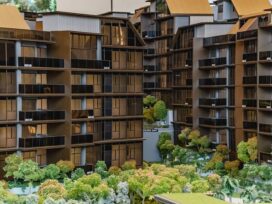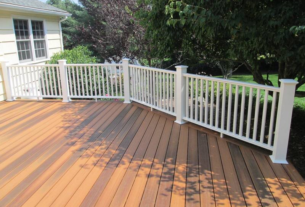
“Decking: Transforming Outdoor Spaces into Oasis of Relaxation and Entertainment”
Introduction (70 words): In the realm of outdoor living, decking has emerged as a transformative element, enabling homeowners to create inviting and functional spaces. With its versatility, durability, and aesthetic appeal, decking has become a popular choice for revamping patios, gardens, and balconies. This article delves into the world of decking, exploring its various types, benefits, and design considerations, while highlighting the ways in which it can elevate outdoor living experiences.
- Types of Decking (90 words): Decking comes in a range of materials, each offering distinct advantages. Wood decking, such as cedar or tropical hardwood, imparts a natural and timeless charm. Composite decking, made from a combination of wood fibers and recycled plastics, provides durability and low maintenance. PVC decking offers excellent weather resistance and is ideal for wet climates. Aluminum decking boasts exceptional strength and longevity. Understanding the characteristics of each material helps homeowners choose the right decking that aligns with their preferences, budget, and environmental considerations.
- Benefits of Decking (90 words): Decking offers numerous benefits that enhance outdoor spaces. Firstly, it expands living areas, providing an extension to the home where residents can relax, entertain, or enjoy alfresco dining. Secondly, it adds value to the property, making it an attractive investment. Additionally, decking creates a smooth and level surface, ensuring safety and comfort for walking or placing furniture. It also acts as a protective barrier, preventing soil erosion and water damage to the underlying structures. Lastly, decking allows for customization, enabling homeowners to personalize their outdoor spaces according to their unique style.
- Design Considerations (120 words): When designing a decking project, several factors need consideration. The layout and dimensions of the space play a crucial role in determining the shape and size of the deck. Homeowners should also evaluate the exposure to sunlight, prevailing winds, and privacy requirements. The choice of railing style, color, and texture of the decking material should harmonize with the overall design scheme. Integrating built-in seating, lighting, and planters can elevate the functionality and aesthetics of the deck. Additionally, incorporating elements like pergolas, fire pits, or outdoor kitchens can create a multifunctional and inviting outdoor oasis.
- Maintenance and Care (80 words): Proper maintenance ensures the longevity and appearance of the deck. Regular cleaning, such as sweeping and hosing off dirt and debris, prevents stains and mold growth. Wooden decking may require periodic sealing or staining to protect it from moisture and UV damage. Composite and PVC decking generally require less maintenance, only needing occasional cleaning. Homeowners should follow the manufacturer’s guidelines for specific care instructions to keep their decks looking pristine year after year.
Conclusion (50 words): Decking has revolutionized outdoor living spaces, providing homeowners with an opportunity to create stunning and functional areas for relaxation and entertainment. By understanding the different types of decking, its benefits, and design considerations, individuals can embark on a transformative journey to turn their outdoor spaces into personal oases that reflect their style and meet their needs.







